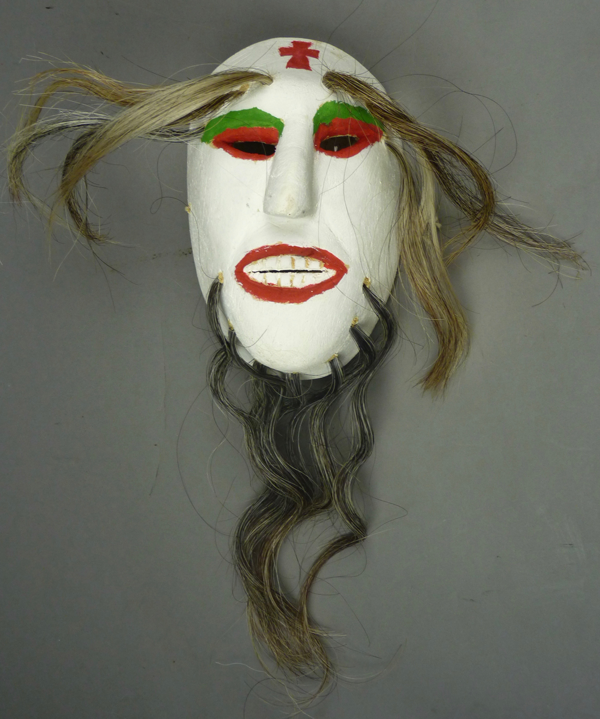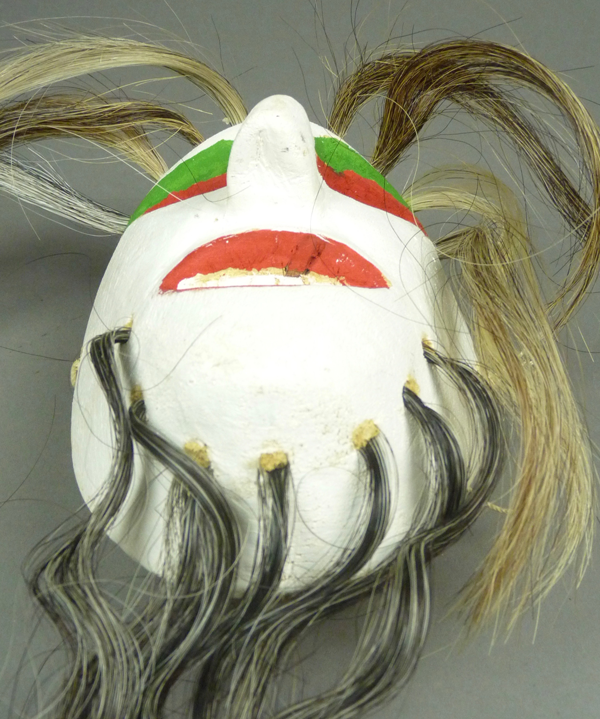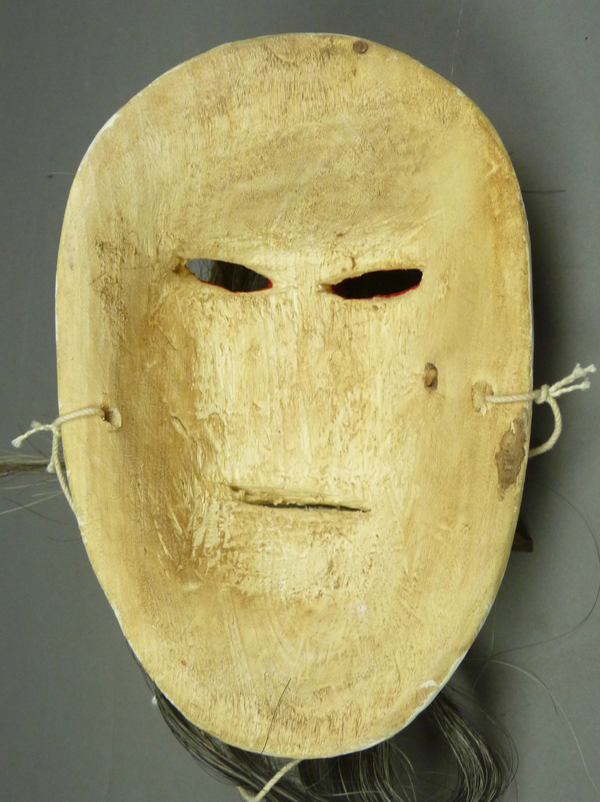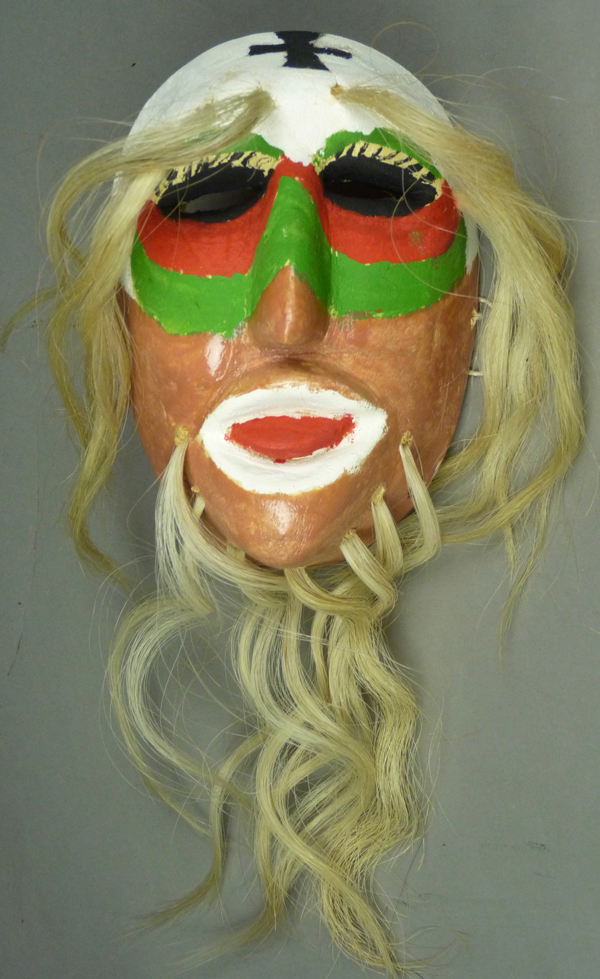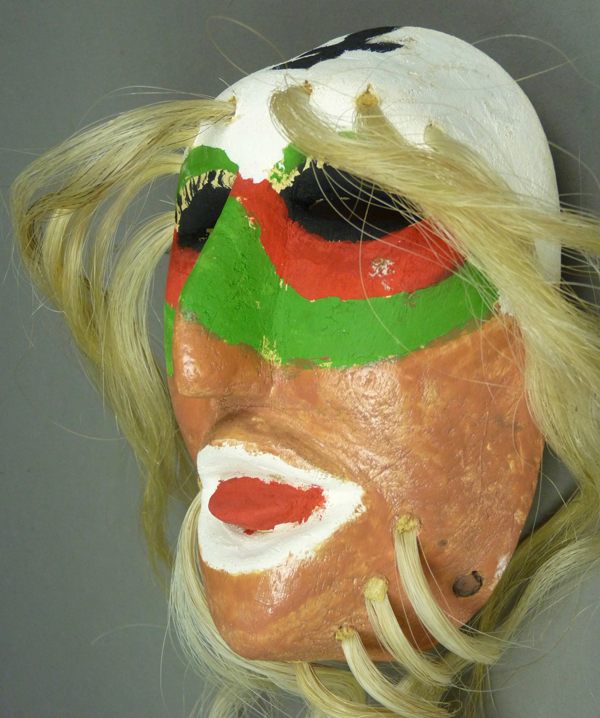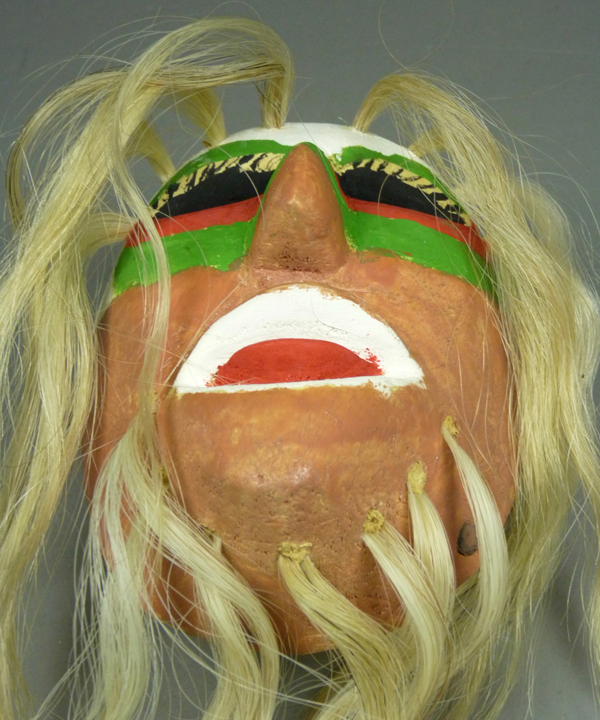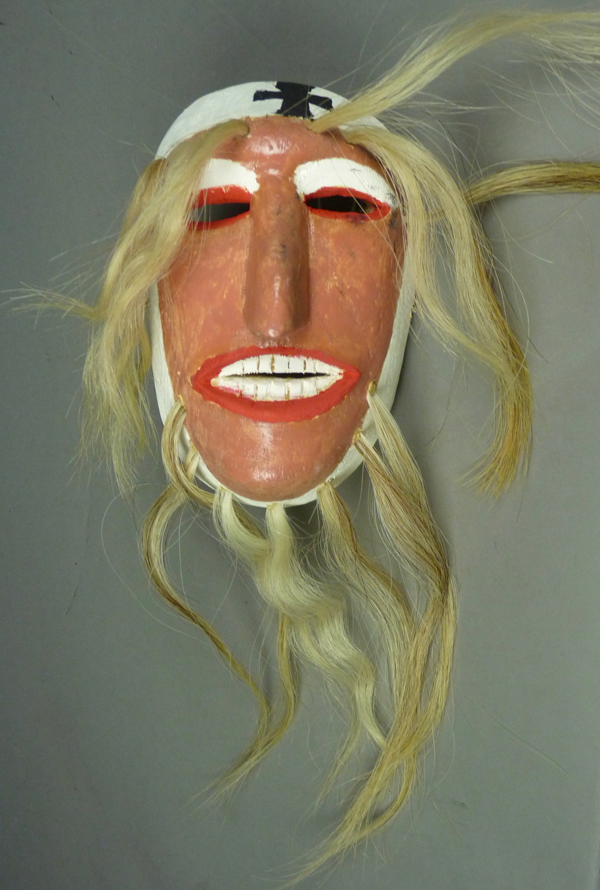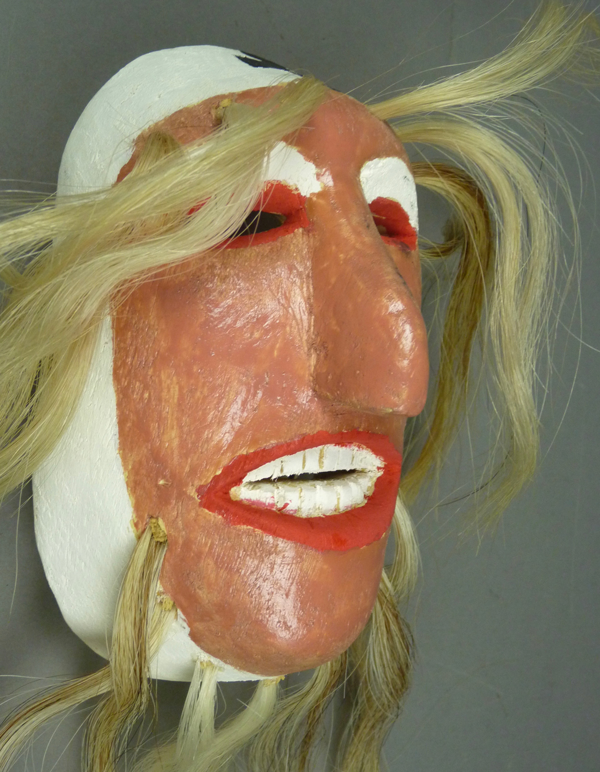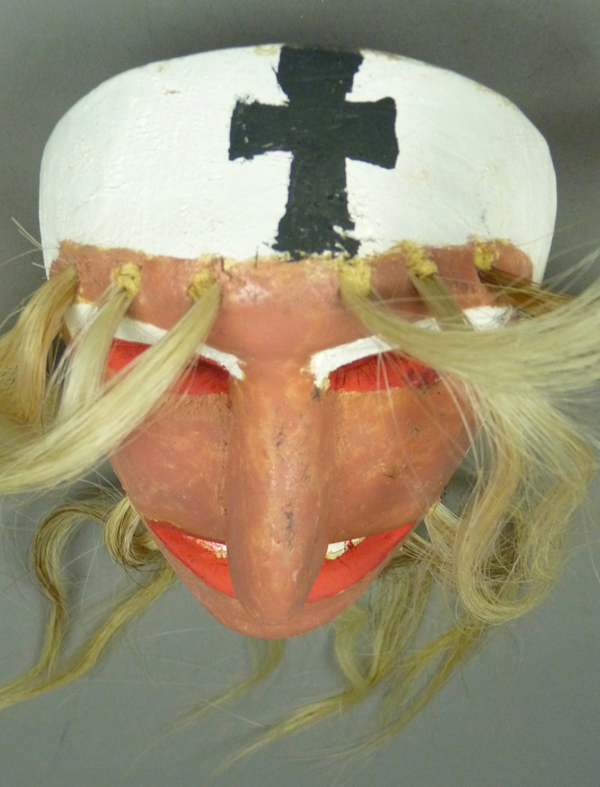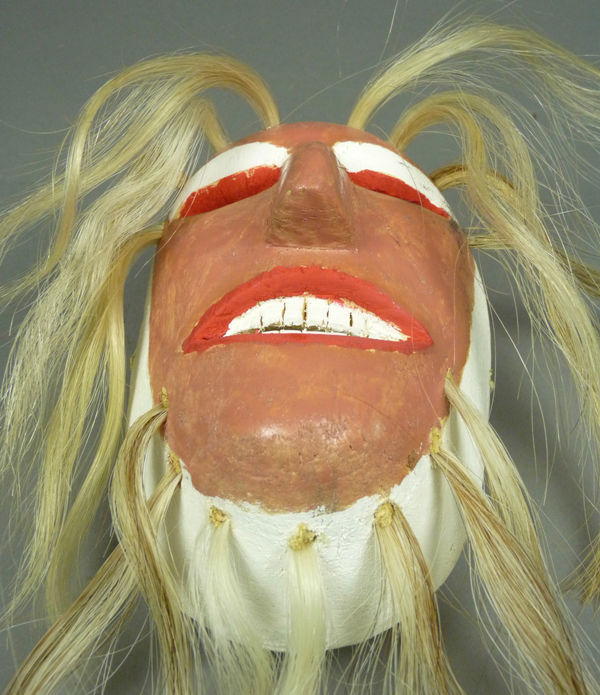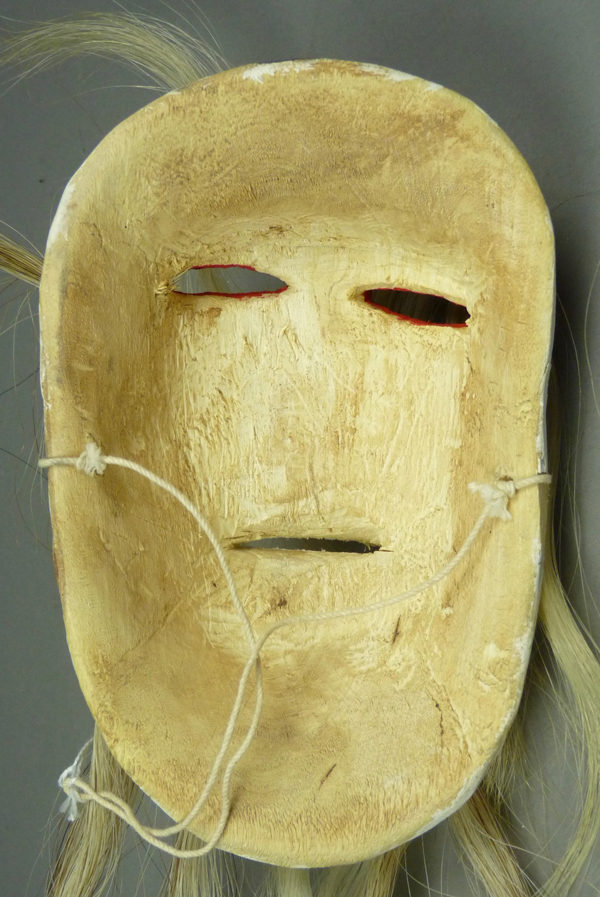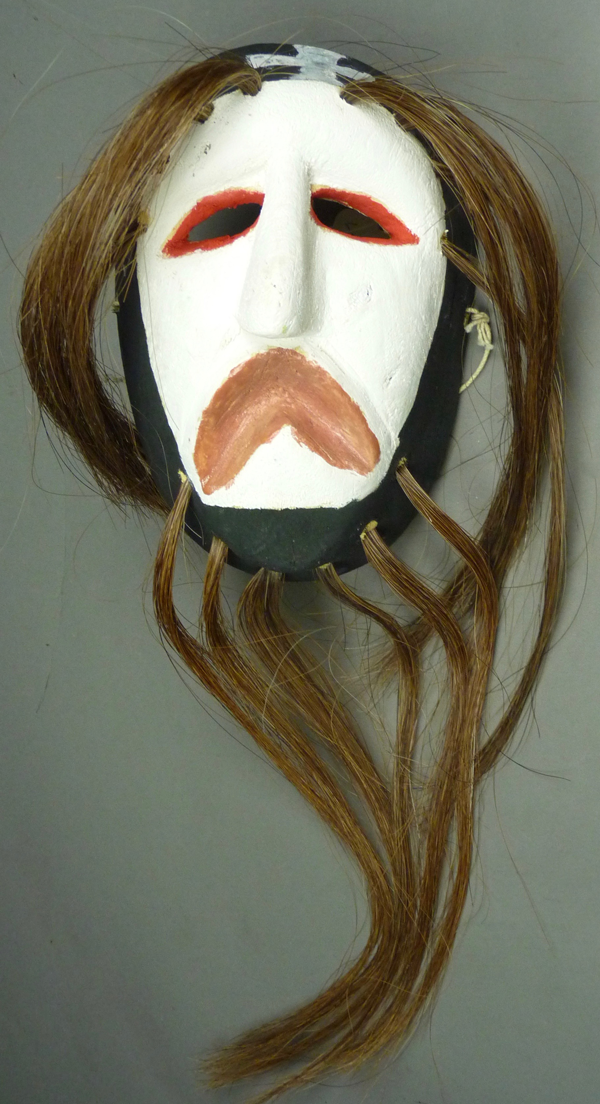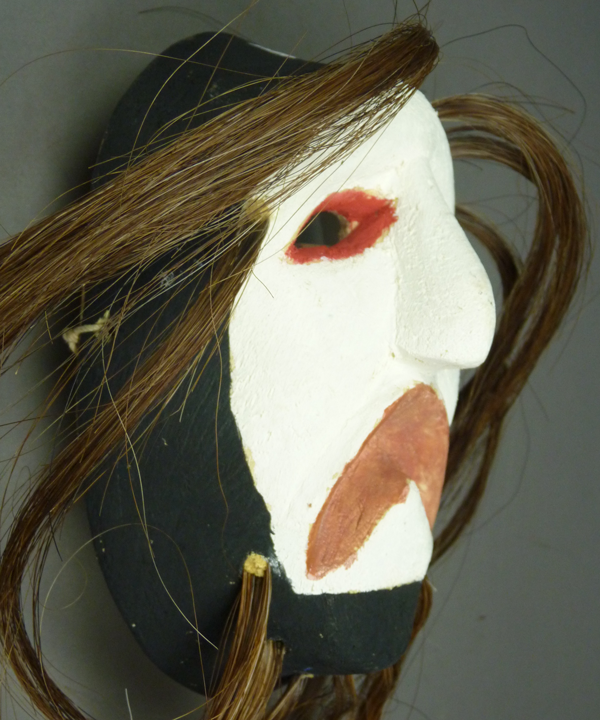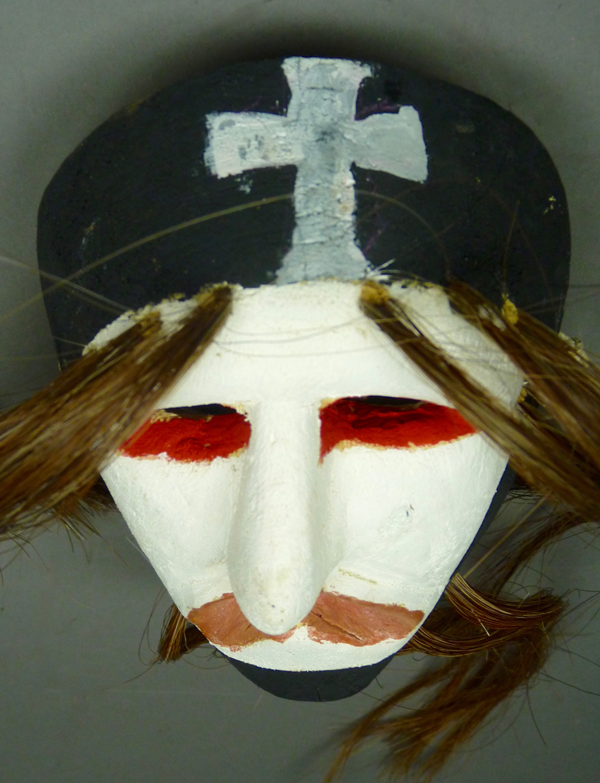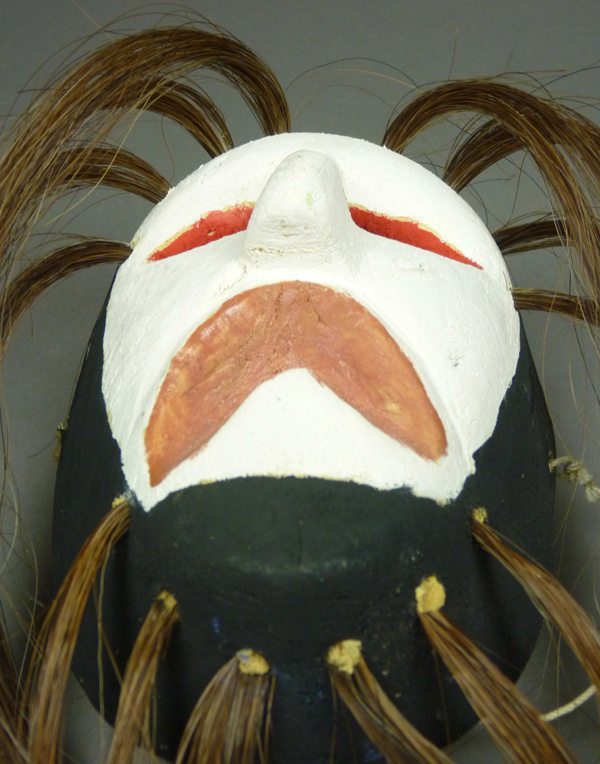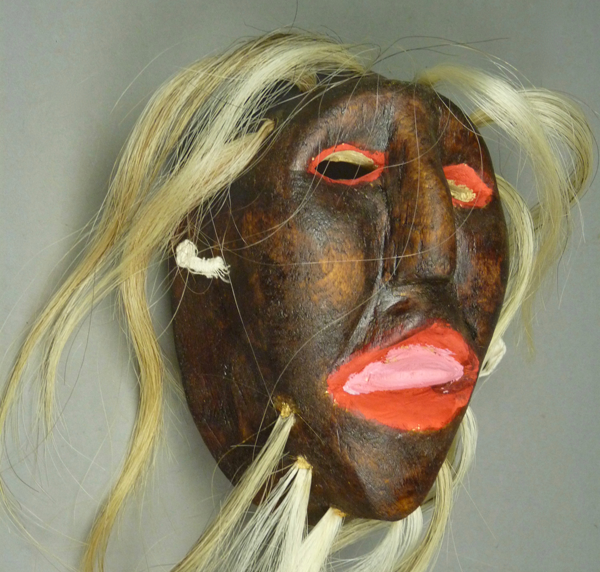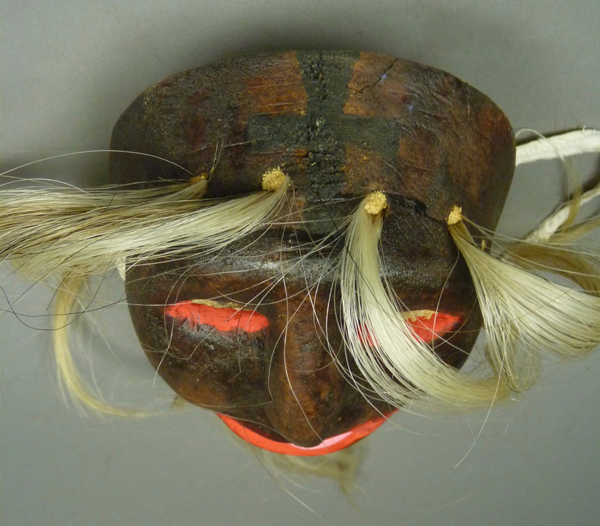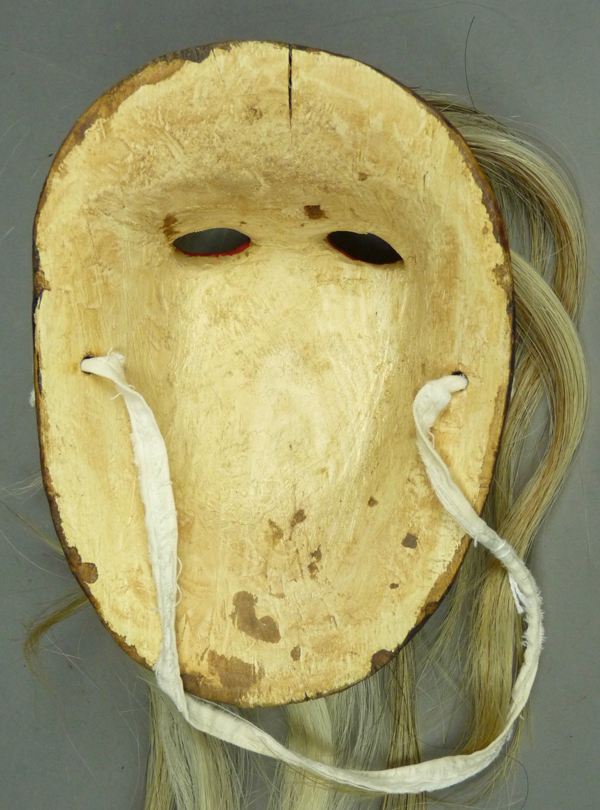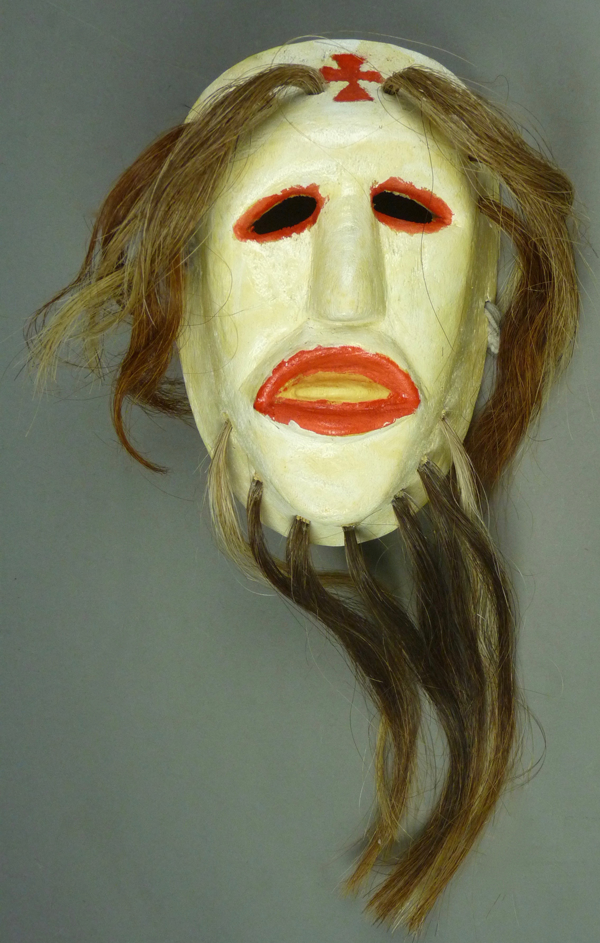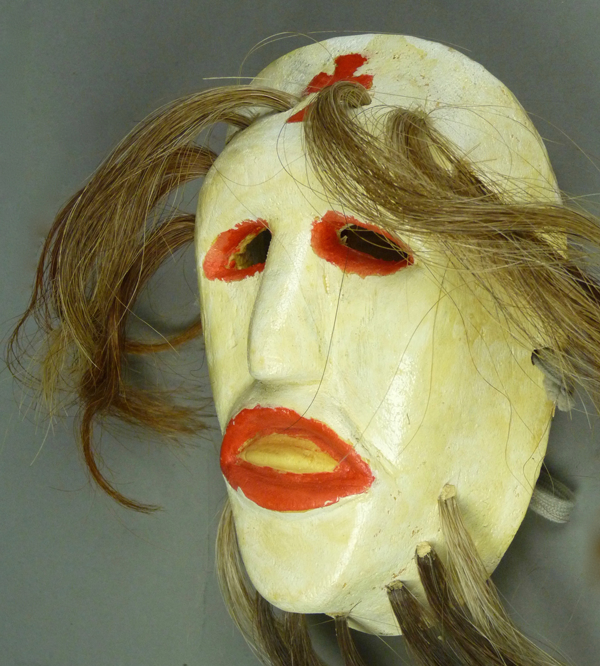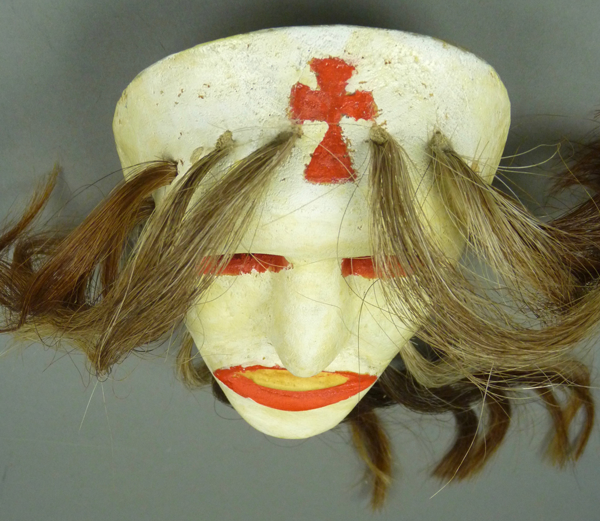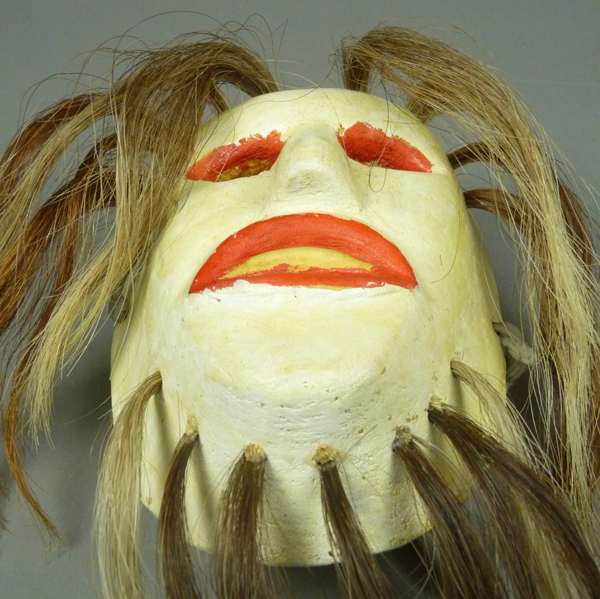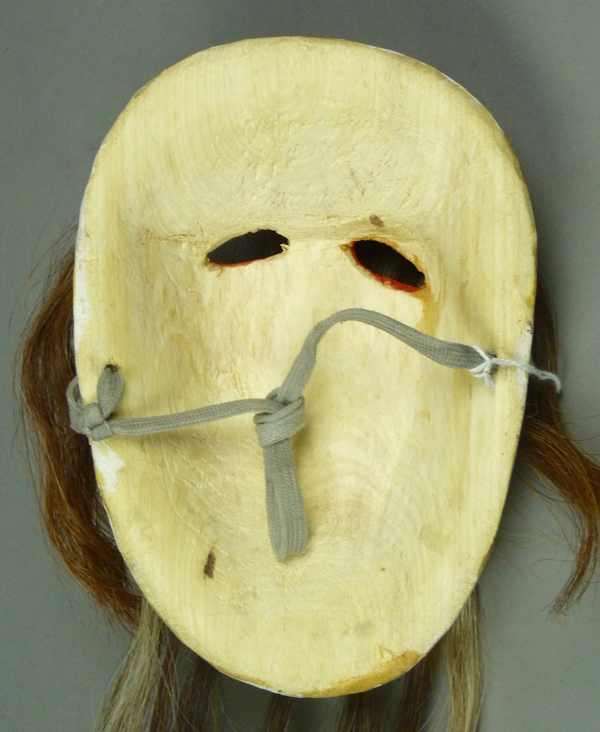For several months we have examined Mayo masks from lowland villages along the Rio Mayo, in Sonora. Then I took a break from Mayo masks to discuss some recent acquisitions or discoveries. Now we will spend two weeks with masks from a village that is also on the Rio Mayo, but much further to the Northeast in a mountainous region. The masks in this week’s post were made in Vado Cuate, a small town North of the City of Alamos. I will start with four masks from Vado Cuate that I obtained from Tom Kolaz in 2005. The carver, Luciano Valenzuela, is a Mayo Indian, his wife is Guarijío (or Warijío), and the masks are used by both Mayo and Guarijího Pascola dancers. The latter Indians live over the border from Sonora, in Chihuahua.
These masks are carefully carved, they are carefully fitted with hair bundles that are held by pegs, and they are painted with bright colors in an informal manner. They don’t appear to be painted for artistic excellence, but to achieve a functional effect—to be suitable for a Pascola to wear during a fiesta. All four of these masks were danced during a fiesta in December 2004, and then they were purchased by a collector. Here is the first.
Some of these masks lack a rim design, nor do they have any other decoration, such as painted wedges on the cheeks. This one simply has a Maltese cross painted on the forehead.
The wooden pegs that hold the hair bundles in place are easily seen.
This mask is 7½ inches tall, 4¾ inches wide, and 3¼ inches deep.
The back demonstrates mild staining from use.
The second mask has a more colorful palette. Maybe this is an “Apache” mask.
This variation has an extended tongue.
It has the carver’s usual Maltese cross on the forehead.
There are the wooden plugs holding the hair bundles.
This mask is 7¼ inches tall, 5 inches wide, and 3 inches deep.
There is mild staining around the rim from use.
The third mask has a Caucasian face, I suppose.
There is a rather plain rim design, just a white band framing the face.
We find again the usual forehead cross.
Also as usual for this carver, there is no chin cross. We see the pegs holding the hair bundles.
This mask is 7¼ inches tall, 4½ inches wide, and 3¼ inches deep.
There is light staining around the rim from use.
The fourth mask has a frowning mouth.
The white face is framed by a black band.
The carver’s usual cross is present.
The pegs for the hair are prominent.
This mask is 7½ inches tall, 5 inches wide, and 3½ inches deep.
This back has moderate staining from use.
In 2007 I bought another four masks by this carver from Tom Kolaz. These had been danced during the Easter Fiesta in 2007.
As some are similar to those we have just seen, I will just show one mask from that set that looks a little different.
I like this color.
The forehead cross almost disappears against this dark background, but the dancer knows it is there. Last week we saw a cross that was hidden inside the back. Ultimately the cross is a communication from the dancer to God
The pegs are easily seen.
This mask is 7¼ inches tall, 5 inches wide, and 3½ inches deep.
The strap is frayed, and there is mild staining from use.
I will end this sequence with yet another mask by Luciano Valenzuela that I purchased recently. It too was danced, and then collected in 2002. I couldn’t resist it because the pale green paint gave it such an eerie look.
Apart from the paint there is little difference between this mask and the others.
Like several of the others, the decoration does not go beyond a forehead cross.
This mask is 7 7/8 inches tall, 5¼ inches wide, and 2¾ inches deep.
There is only mild staining on the back.
Next week I will show a few more of this carver’s masks, in order to illustrate how dancers have sometimes enhanced these simple designs.
Bryan Stevens

